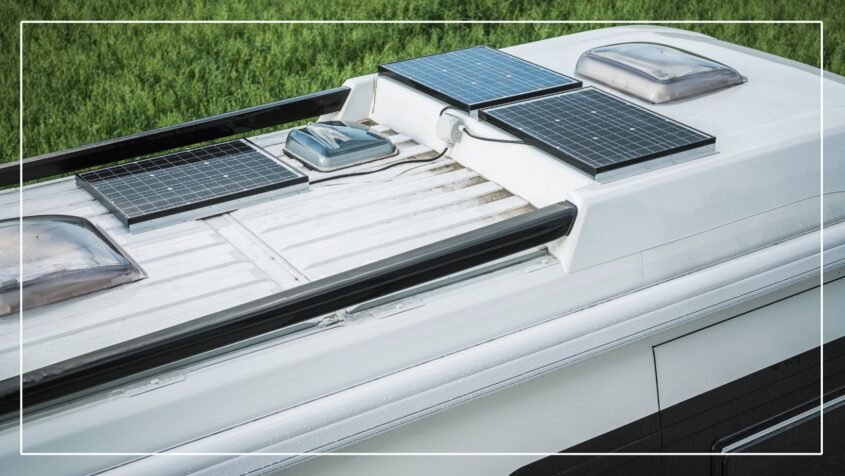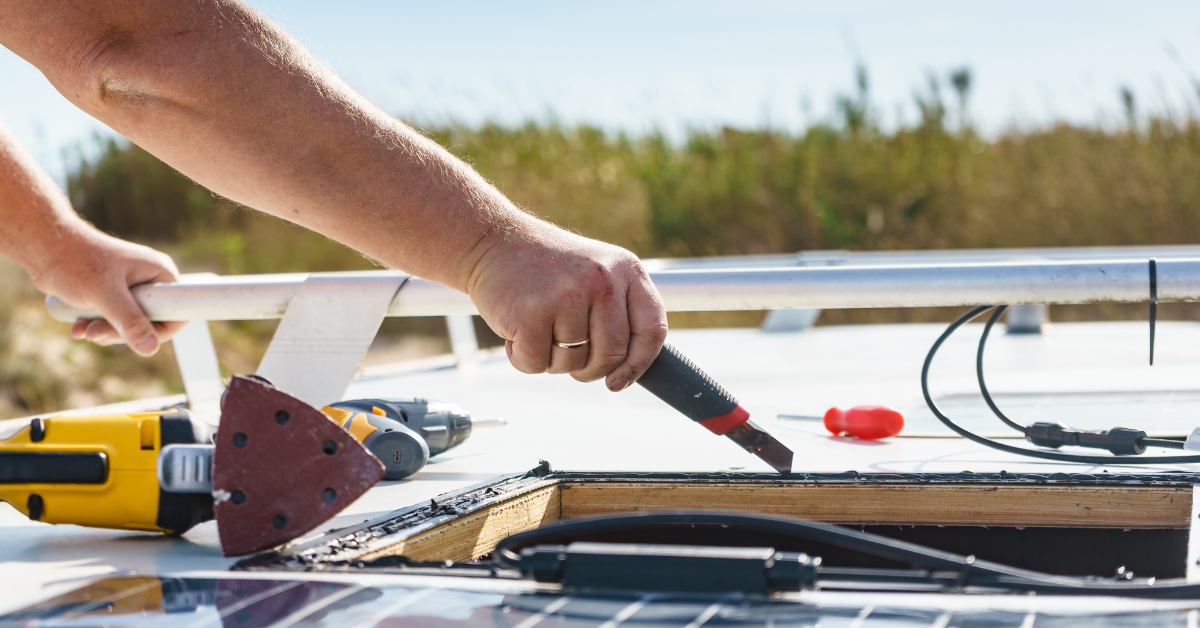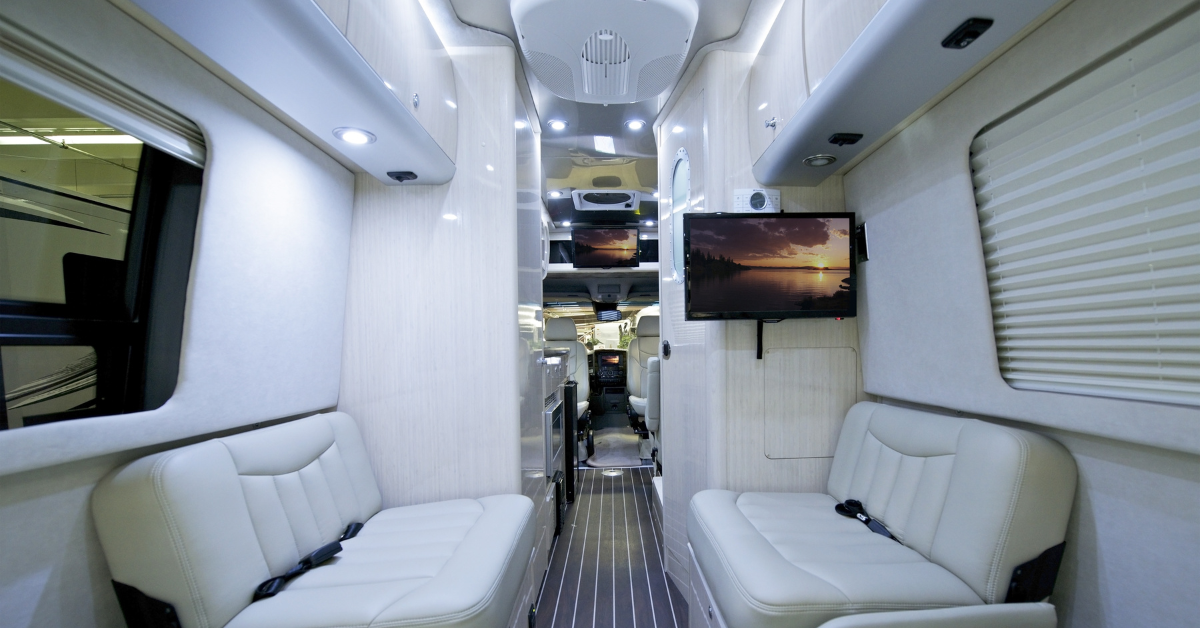Solar Power Gear for Vanlife: Harness the Sun for Your Next Adventure

Embracing vanlife offers unparalleled freedom, allowing you to explore the world on your terms. However, maintaining a reliable power source is crucial for a comfortable and sustainable journey.
Solar power has become the go-to solution for many van dwellers, providing an eco-friendly and efficient way to stay powered while off-grid.
In this comprehensive guide, we’ll delve into the essentials of solar power gear for vanlife, helping you make informed decisions to optimize your mobile living experience.
Understanding Solar Power for Vanlife
Solar power harnesses energy from the sun through photovoltaic (PV) cells in solar panels, converting sunlight into electricity.
This electricity is then stored in batteries, allowing you to power various appliances and devices in your van, from lights and refrigerators to laptops and fans.
By utilizing solar power, vanlifers can achieve greater independence, reducing reliance on external power sources and minimizing environmental impact.

Key Components of a Vanlife Solar System
A well-designed solar power system for your van comprises several critical components:
- Solar Panels: These capture sunlight and convert it into electrical energy.
- Charge Controller: Regulates the voltage and current coming from the solar panels to prevent overcharging the batteries.
- Batteries: Store the generated electricity for later use.
- Inverter: Converts the stored DC (direct current) power into AC (alternating current) power, which is used by most household appliances.
- Wiring and Mounting Hardware: Essential for connecting and securing the system components.
Each component plays a vital role in ensuring your solar power system operates efficiently and safely.
Choosing the Right Solar Panels
Selecting the appropriate solar panels is decisive for maximizing energy production within the limited space on your van’s roof. The main types of solar panels suitable for vanlife include:
- Monocrystalline Panels: Known for their high efficiency and sleek appearance, these panels perform well in low-light conditions but come at a higher cost.
- Polycrystalline Panels: Slightly less efficient and bulkier than monocrystalline panels, they are more budget-friendly.
- Thin-Film Panels: Lightweight and flexible, these panels are less efficient and may have a shorter lifespan but can be a good option for irregular surfaces.
When choosing panels, consider factors such as available roof space, energy needs, and budget. It’s also essential to assess the wattage of the panels; higher wattage panels generate more power but occupy more space.
For instance, a 200W panel will produce more energy than a 100W panel but will require more roof area.
How Much Solar Power Do You Need for Vanlife?
Before investing in solar power gear, it’s vital to assess your energy consumption to ensure your system can meet your daily requirements.
Start by listing all the devices and appliances you plan to use, noting their wattage and estimated daily usage in hours. This will help you calculate your total daily energy consumption in watt-hours (Wh).
For example, if you use a 50W laptop for 4 hours a day, it will consume 200Wh daily. Summing the consumption of all devices will give you an estimate of your total daily energy needs.
This calculation is crucial for sizing your solar panels and battery bank appropriately.
Other things to consider:
- Lighting: LED lights consuming about 5W each.
- Refrigeration: A 12V refrigerator using around 40-60W.
- Electronics: Charging laptops, phones, and cameras consuming 50-100W.
- Other Appliances: Occasional use of devices like a water pump or fan.
For example, if your daily consumption totals 1,000Wh, you would need approximately 300W of solar panels to generate enough energy, accounting for inefficiencies and cloudy days.
Combine this with a battery capacity sufficient to store at least two days’ worth of power for consistent off-grid living.

Selecting the Right Battery Setup
The battery bank is the heart of your van’s electrical system, storing the energy harnessed by your solar panels. Common battery types used in vanlife include:
- Lead-Acid Batteries: Affordable and widely available, but heavier and offer a shorter lifespan.
- AGM (Absorbent Glass Mat) Batteries: A type of lead-acid battery that is maintenance-free and has a longer lifespan.
- Lithium-Ion Batteries: More expensive upfront but lighter, more efficient, and have a longer lifespan compared to lead-acid batteries.
When choosing batteries, consider factors such as weight, space, budget, and energy needs. Lithium-ion batteries are often preferred for their efficiency and longevity, despite the higher initial cost.
Portable Solar Power Options
For those who prefer flexibility or have limited roof space, portable solar panels can be an excellent alternative.
These panels can be set up when parked and stored away during transit. Portable solar panels are also beneficial for positioning in optimal sunlight, especially if your van is parked in a shaded area.
However, they require manual setup and monitoring, which may not be convenient for everyone. Brands like Renogy and Jackery offer reliable portable solar solutions suitable for vanlife.
Off-Grid Solar Power Considerations
Living off-grid requires careful planning to ensure a consistent power supply. Factors to consider include:
- Geographic Location: Sunlight availability varies by location and season, affecting solar power generation.
- Energy Efficiency: Opt for energy-efficient appliances to reduce overall consumption.
- Backup Power: Consider alternative power sources, such as a generator or vehicle alternator, for periods of low sunlight.
By carefully assessing these factors, you can design a solar power system that supports a sustainable off-grid lifestyle.
Eco-Friendly Power Solutions for Vanlife
One of the main appeals of vanlife is its alignment with sustainable living. Choosing eco-friendly solar power gear ensures you minimize your environmental footprint while enjoying life on the road.
Here are some tips to make your solar setup even greener:
- Opt for High-Efficiency Panels: Panels with higher efficiency require less space to generate the same amount of power, reducing the overall environmental impact of production and transport.
- Recycle and Dispose Properly: Ensure that old batteries or components are recycled according to local regulations to avoid harming the environment.
- Energy-Efficient Appliances: Use LED lights, low-wattage devices, and efficient refrigerators to reduce energy consumption and maximize the utility of your solar setup.
By focusing on these eco-friendly measures, vanlife enthusiasts can enjoy a comfortable off-grid lifestyle while staying true to their sustainability goals.
Best Solar Gear for Van Camping
Choosing the right gear is crucial to maximize your investment. Here are some of the top solar solutions for van camping:
- Renogy Solar Starter Kits: Ideal for beginners, these kits include panels, a charge controller, and mounting hardware. They offer excellent efficiency and reliability.
- Jackery Portable Solar Generators: Perfect for those who want portable power solutions, Jackery’s compact solar generators combine solar panels and batteries in one easy-to-use system.
- Victron Energy Components: Known for their high-quality inverters and charge controllers, Victron products ensure your system runs smoothly and efficiently.
Pairing the right gear with your specific energy needs and lifestyle ensures a seamless transition to off-grid power.

DIY Solar Setup for Vanlife
A DIY approach to setting up a solar power system can save costs and allow for full customization. Here’s a step-by-step guide:
- Plan Your System: Calculate your energy needs and select the right components, including panels, batteries, and inverters.
- Purchase the Components: Source high-quality parts that match your budget and power requirements.
- Install Solar Panels: Secure the panels to your van’s roof using mounting brackets, ensuring they are angled for optimal sunlight exposure.
- Connect the Charge Controller: Wire the panels to the charge controller to regulate power flow and prevent battery overcharging.
- Install Batteries and Inverter: Position your battery bank and inverter securely, connecting them to the charge controller and your van’s electrical system.
While DIY installations can be rewarding, it’s important to follow safety protocols and consult experts if needed to avoid mistakes.
Pros and Cons of Solar Power for Vanlife
While solar power is a game-changer for vanlife, it’s important to weigh the benefits and drawbacks:
Pros:
- Eco-Friendly: Reduces reliance on fossil fuels.
- Cost-Effective: After the initial investment, solar energy is essentially free.
- Quiet and Maintenance-Free: Unlike generators, solar panels operate silently and require minimal upkeep.
Cons:
- High Initial Costs: Setting up a solar system can be expensive, particularly with high-quality components.
- Weather Dependence: Power generation decreases on cloudy or rainy days.
- Space Limitations: Vans with limited roof space may struggle to install large panels.
Understanding these factors helps you make an informed decision about whether solar power is right for your vanlife journey.
Final Thoughts
Embracing solar power for vanlife is an investment in freedom, sustainability, and convenience. Whether you’re a weekend warrior or a full-time vanlifer, the right solar setup allows you to power your adventures while reducing your environmental impact.
By understanding your energy needs, choosing the best gear, and considering eco-friendly practices, you can create a solar system that supports your lifestyle and aligns with your values.
So, are you ready to hit the road with the sun powering your journey?



